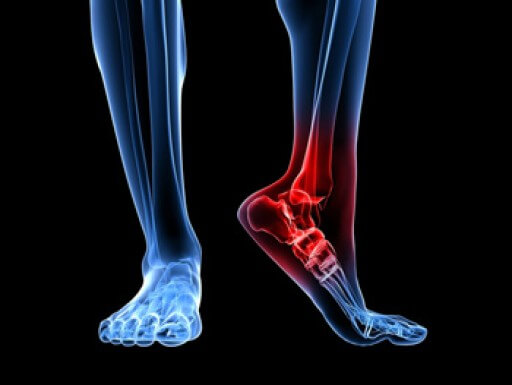 The heel bone is the largest bone in the foot. Additionally, it absorbs most of the shock and pressure on the foot. An abnormal growth that forms on the heel bone is known as a heel spur. Heel spurs can become extremely painful, especially while walking or standing. They occur when calcium deposits build up on the heel bone as a result of the plantar fascia, which connects the heel bone to the toes, pulling away from the heel. Flat feet and high arches can also stretch the plantar fascia, which can lead to an increased risk of developing heel spurs. The key to treating a heel spur comes from determining what is stretching the plantar fascia. Because of this, it is important to be under the care of a podiatrist who can help find the cause of your heel pain and suggest the right treatments for you.
The heel bone is the largest bone in the foot. Additionally, it absorbs most of the shock and pressure on the foot. An abnormal growth that forms on the heel bone is known as a heel spur. Heel spurs can become extremely painful, especially while walking or standing. They occur when calcium deposits build up on the heel bone as a result of the plantar fascia, which connects the heel bone to the toes, pulling away from the heel. Flat feet and high arches can also stretch the plantar fascia, which can lead to an increased risk of developing heel spurs. The key to treating a heel spur comes from determining what is stretching the plantar fascia. Because of this, it is important to be under the care of a podiatrist who can help find the cause of your heel pain and suggest the right treatments for you.
Heel spurs can be incredibly painful and sometimes may make you unable to participate in physical activities. To get medical care for your heel spurs, contact the podiatrists from Boston Common Podiatry. Our doctors will do everything possible to treat your condition.
Heels Spurs
Heel spurs are formed by calcium deposits on the back of the foot where the heel is. This can also be caused by small fragments of bone breaking off one section of the foot, attaching onto the back of the foot. Heel spurs can also be bone growth on the back of the foot and may grow in the direction of the arch of the foot.
Older individuals usually suffer from heel spurs and pain sometimes intensifies with age. One of the main condition's spurs are related to is plantar fasciitis.
Pain
The pain associated with spurs is often because of weight placed on the feet. When someone is walking, their entire weight is concentrated on the feet. Bone spurs then have the tendency to affect other bones and tissues around the foot. As the pain continues, the feet will become tender and sensitive over time.
Treatments
There are many ways to treat heel spurs. If one is suffering from heel spurs in conjunction with pain, there are several methods for healing. Medication, surgery, and herbal care are some options.
If you have any questions, please feel free to contact our office located in Boston, MA . We offer the newest diagnostic and treatment technologies for all your foot care needs.
















